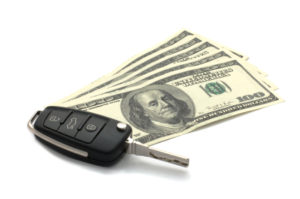 What Is a Reaffirmation Agreement?
What Is a Reaffirmation Agreement?
The purpose of a reaffirmation agreement is simple. It gives a creditor the ability to sue you in the future, even if you obtained a discharge in a Chapter 7 bankruptcy. That’s why every debtor’s bankruptcy attorney ought to be hostile to any reaffirmation agreement.
Reaffirmation agreements can be imposed on a debtor in Chapter 7 who wishes to retain personal property securing a loan. Personal property collateral for such a secured loan is most often a vehicle, but it could also be jewelry. Note that “real property,” or real estate is not personal property, and the Bankruptcy Code does not give mortgage lenders the right to impose a reaffirmation agreement. Note also, that reaffirmation agreements cannot be imposed at all in Chapter 13 bankruptcy, a real advantage of Chapter 13.
Reaffirmation agreements do not benefit debtors. They only benefit the secured creditors. This is because their purpose is to allow secured creditors to collect the unsecured portion of an otherwise secured debt after repossession. For example, if you have an auto loan with a balance owed of, say, $20,000, and the car securing the loan is worth only $12,000, then the unsecured portion of the debt is $8,000.
Outside of bankruptcy, if you default on that loan, the auto lender will first rely on its lien against the car and repossess the vehicle. Assuming that the lender is able to auction the vehicle for $12,000, you still owe them the remaining $8,000. The lender then will exercise its contract remedy against you, and use various means, including suing you to collect the $8,000 balance of the debt.
The Chapter 7 Discharge Protects Against Future Lawsuits
A discharge in Chapter 7 bankruptcy would discharge you of your personal liability on the unsecured portion of the debt. That means the lender could never sue you for the $8,000 in our example above. Of course, a Chapter 7 discharge does not remove the lien against the vehicle. Chapter 7 does not give you the car without paying off the lien. But it would prevent the lender from suing you in the future if you were unable to pay off the car in the future after your bankruptcy. In other words, if you lost your ability to pay for the car after obtaining a Chapter 7 discharge, and the lender repossessed the car or if you simply voluntarily surrendered the vehicle after receiving your bankruptcy discharge, then the lender would be prevented from suing you for any balance owed after they auction off the car. Enter the reaffirmation agreement.
A Reaffirmation Agreement Defeats the Bankruptcy Discharge
The Bankruptcy Code requires a Chapter 7 debtor to choose what she wants to do with debts secured by personal property like car loans. The debtor must either: “retain the property and reaffirm the debt,” “redeem” (meaning keep the car and pay it off all at once), or “surrender” the car. If the debtor in a Chapter 7 filed in California wants and/or needs to keep her car, which is most often the case, then the lender can require the debtor to sign a reaffirmation agreement. A reaffirmation agreement effectively waives her bankruptcy discharge as to that debt.
A reaffirmation agreement creates a new binding contract in the place of the original car loan. The reason that a reaffirmation agreement is such a potentially disastrous contract for the Chapter 7 debtor is simply this: in the absence of a reaffirmation agreement, if you fell on hard times after your Chapter 7 bankruptcy case closed and defaulted on your car payments, then sure, the lender could repossess the car. The lender still has a lien against the car. But, importantly, they could not sue you for the “deficiency” between what you then owed and the value of the car. A reaffirmation agreement creates a brand new, post-bankruptcy binding contract, which allows the lender to sue the bankruptcy debtor in the event of a repossession subsequent to his or her bankruptcy.
If They’re So Bad, Why Would Anyone Sign a Reaffirmation Agreement?
Because the financing company, credit union or bank that holds your car’s pink slip can force you to, that’s why. In Chapter 7 bankruptcy cases filed in California, the lender can repossess your vehicle if you refuse to sign a Reaffirmation Agreement. However, even if you do sign one, a reaffirmation agreement must be filed in the Chapter 7 bankruptcy case, and it must be approved by the Bankruptcy Court. This requires a separate hearing before your bankruptcy judge in which the judge will ask you questions about how you can afford to pay for the car and whether the reaffirmation agreement will impose an “undue hardship” on you.
As debtors’ bankruptcy attorneys in San Jose, California, we deal with dozens of auto loan reaffirmation agreements every year. These are the source of much confusion on the part of clients.
The good news is that over the last several years, most of the biggest auto lenders have given up insisting on imposing a reaffirmation agreement. For the most part, they have realized that many of our bankruptcy judges won’t approve them, and in the end, most Chapter 7 debtors successfully pay off their car loans after bankruptcy.





